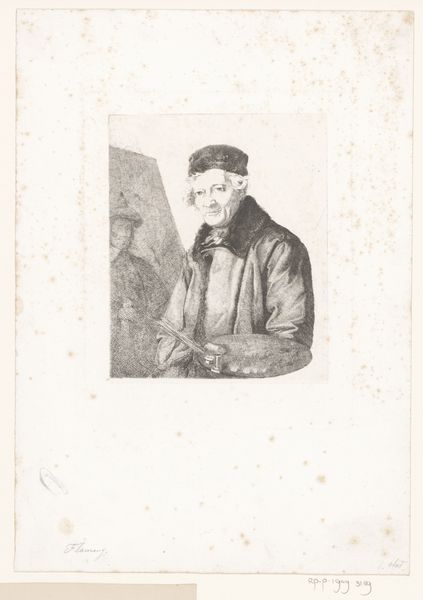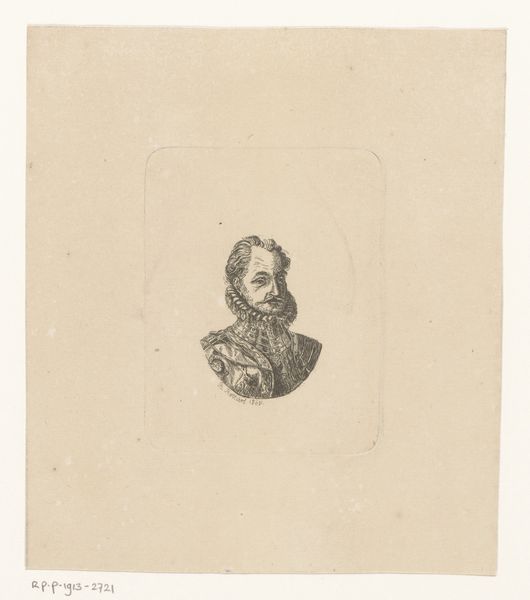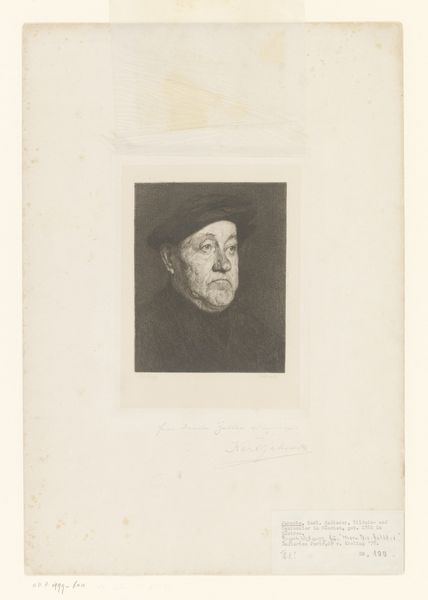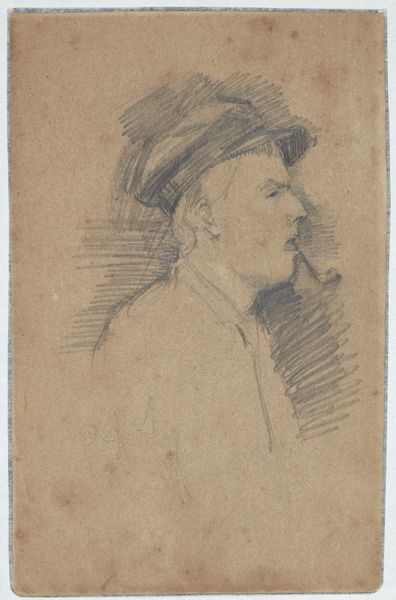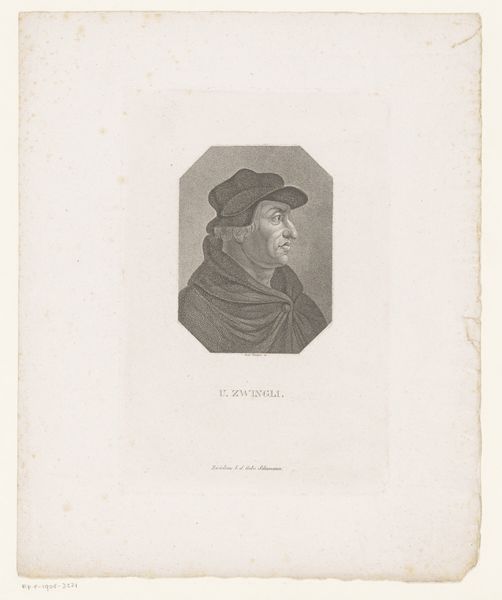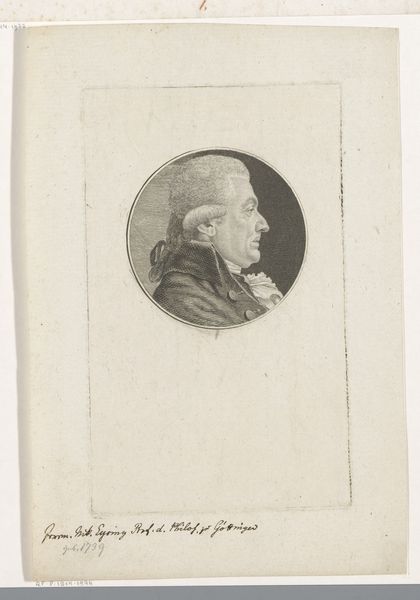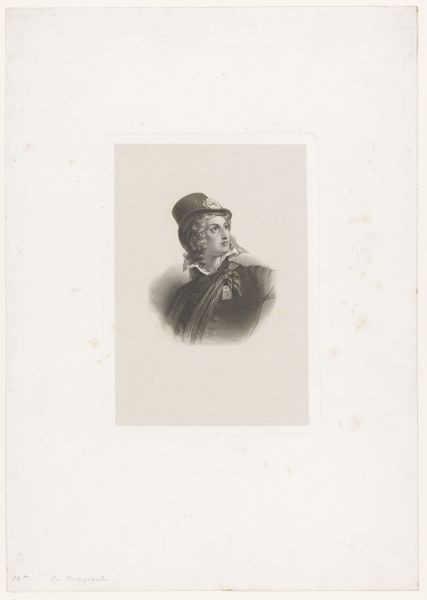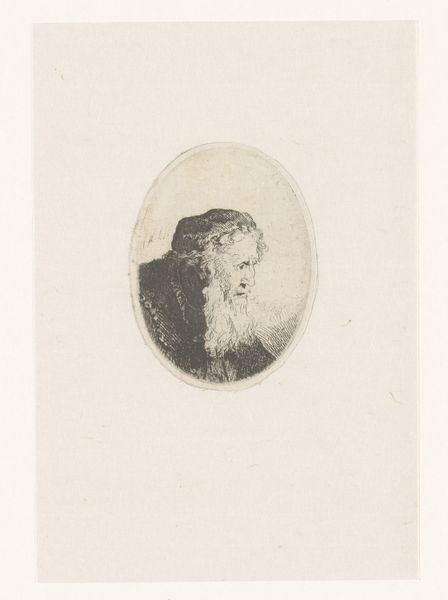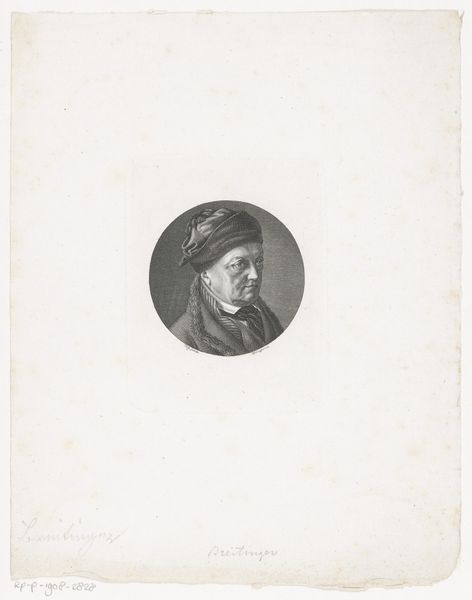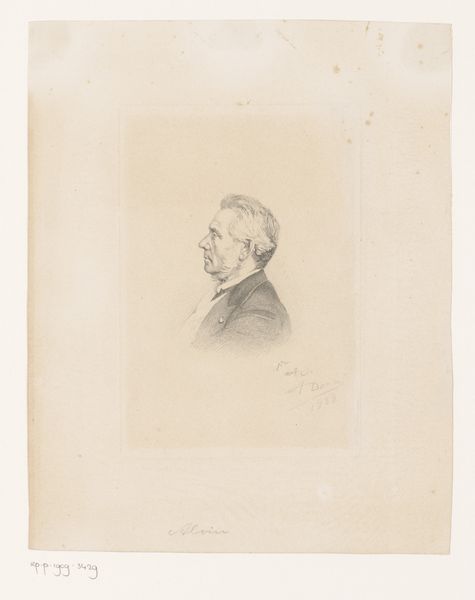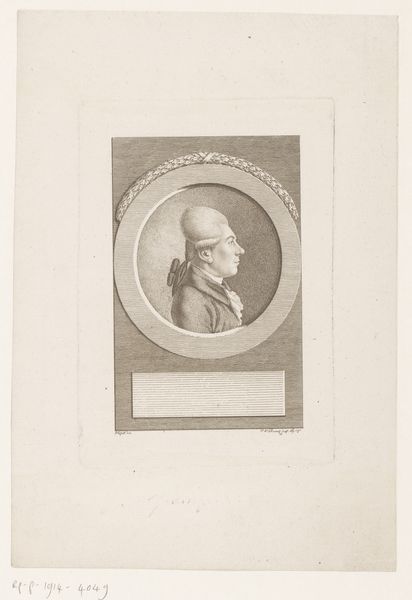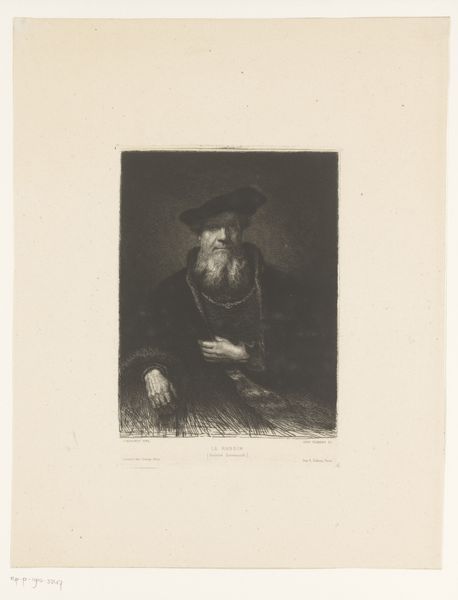
drawing, print, paper, ink
#
portrait
#
drawing
# print
#
paper
#
ink
Dimensions: height 140 mm, width 118 mm
Copyright: Rijks Museum: Open Domain
Curator: We're looking at "Portret van een onbekende man, mogelijk De Groot," which translates to "Portrait of an unknown man, possibly De Groot," created in 1894 by Georges Montenez using ink on paper. The artwork resides within the drawing and print mediums. Editor: My immediate response is… austerity. The stern profile, the dark hat, the serious expression. It feels incredibly somber, like a snapshot of someone facing a weighty historical moment. Curator: The ambiguity surrounding the sitter's identity invites intriguing speculation about the subject's social standing within fin-de-siècle Europe, particularly concerning class dynamics reflected in artistic commissions. He is “possibly” someone of status. Editor: I agree. But it’s not just social status, it’s about the performative aspects of identity too. He's projecting an image of intellect and seriousness through very deliberate choices of clothing and grooming, hinting to some type of non-conformist belief in a society full of rules and restraints. The beard, the specific shape of his hat... Curator: This attention to detail speaks to the meticulous printmaking process Montenez employed. The subtle gradations of ink create texture, depth and give the piece an air of importance; he surely used traditional techniques with academic undertones to depict him as an elevated figure. Editor: I'd argue that by depicting this anonymous figure, Montenez subtly challenged the art world’s dependence on painting elites by democratizing portraiture and acknowledging that everyone has a unique and important story to tell. He wanted us to know who he was; but by giving no real background information he also challenges that idea by giving this person total anonymity. Curator: That’s certainly a plausible reading. Perhaps Montenez was also engaging with the burgeoning culture of anonymity made possible by mass media. Art as commentary, as public discourse; what’s shown, what isn’t; his intention could have gone either way. Editor: It really underscores how a single image, stripped of concrete biographical context, can become a rich site for contemporary interrogation about the representation of history, identity and agency. The sitter is truly, nobody, and thus represents an abstract ideal of social progressivism. Curator: Exactly, this "unknown man" challenges us to consider the ever-evolving nature of public figures and the stories behind the portraits. He seems simple, but in actuality has deeper, broader connections with our lives than first interpreted.
Comments
No comments
Be the first to comment and join the conversation on the ultimate creative platform.
